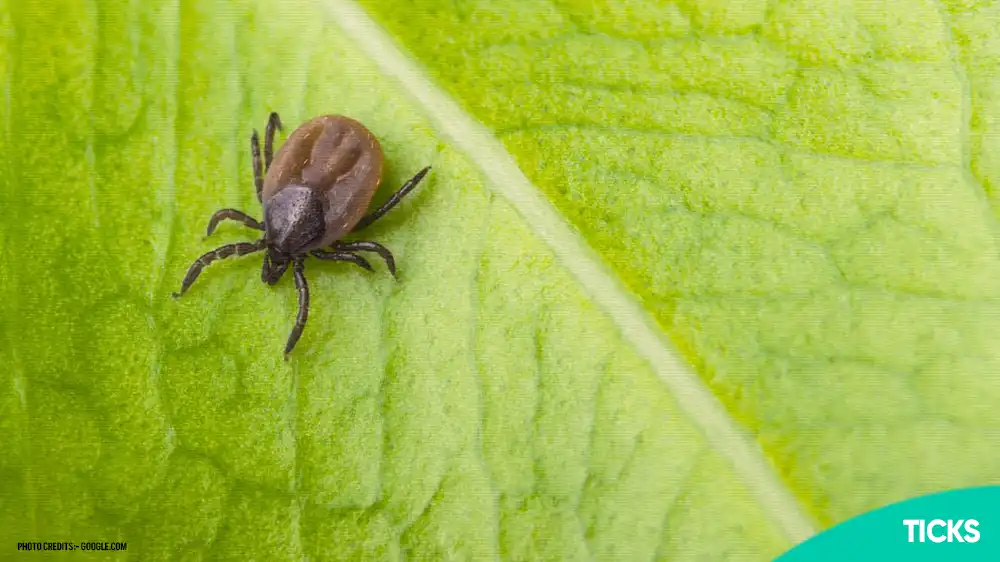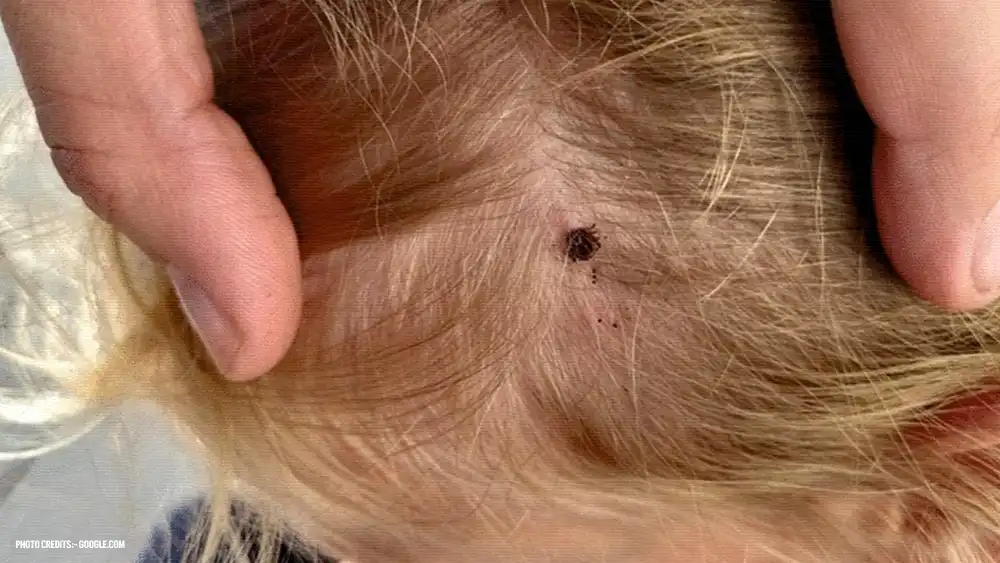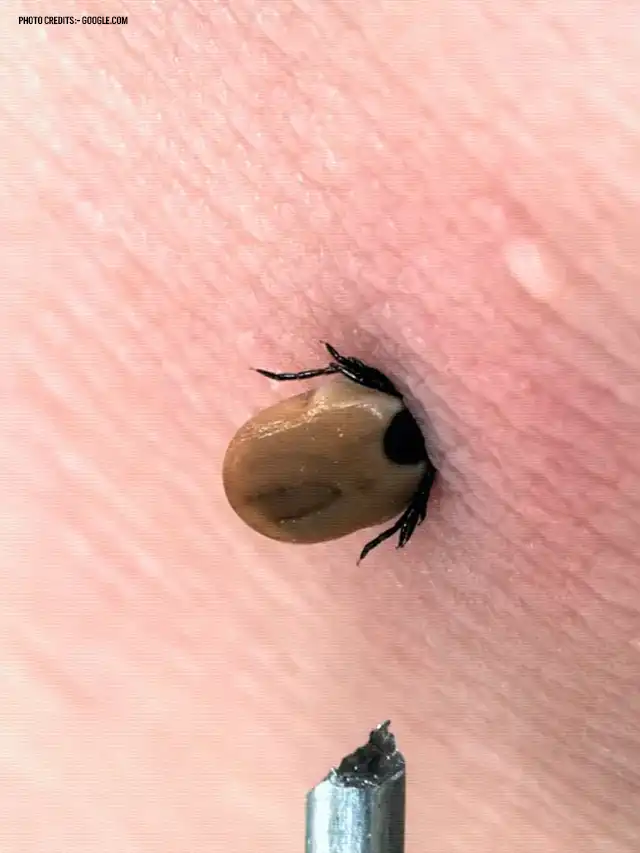
HEALTH BLOG
How to Protect Yourself from Ticks Borne Disease with 10 Methods
-
Rahul Priydarss
Protect yourself from ticks borne diseases with these 10 essential methods. Learn about common tick-borne illnesses, preventive measures, and how to stay safe outdoors. From avoiding tick-infested areas to performing regular tick checks, this comprehensive guide provides valuable insights to help you minimize the risk of tick bites and stay healthy.
What Are Tick-Borne Diseases:
Tick-borne diseases are illnesses transmitted to humans and animals through the bites of infected ticks. Ticks are small, blood-feeding arachnids that attach to their hosts and can transmit various pathogens as they feed, including bacteria, viruses, and protozoa. These diseases can range from mild to severe and, if untreated, can sometimes be life-threatening.
Ticks might be tiny, but the health risks they pose are anything but small. These minuscule pests can carry serious diseases like Lyme disease and Rocky Mountain spotted fever. So, how can you protect yourself from these pesky parasites? Here are 10 effective ways to keep ticks at bay and enjoy the great outdoors safely.

Table of Contents
Overview of Tick-Borne Diseases:
Tick-borne diseases are illnesses transmitted to humans and animals by the bites of infected ticks. These diseases can range from mild to severe and can sometimes be life-threatening if not properly treated. Here is an overview of some of the most common and significant tick-borne diseases.
1. Lyme Disease:
Causative Agent: Borrelia burgdorferi (in North America) and Borrelia afzelii and Borrelia garinii (in Europe and Asia).
Symptoms: Early symptoms include fever, headache, fatigue, and a characteristic skin rash called erythema migrans. Infection can spread to joints, the heart, and the nervous system if untreated.
Transmission: Mainly through the bite of infected black-legged ticks (Ixodes scapularis) in the northeastern and north-central United States, and the western black-legged tick (Ixodes pacificus) along the Pacific coast.
2. Rocky Mountain Spotted Fever (RMSF):
Causative Agent: Rickettsia rickettsii.
Symptoms: Symptoms include fever, headache, rash, nausea, vomiting, stomach pain, muscle pain, and lack of appetite. The rash typically begins a few days after fever onset.
Transmission: Transmitted by the American dog tick (Dermacentor variabilis), Rocky Mountain wood tick (Dermacentor andersoni), and the brown dog tick (Rhipicephalus sanguineus).
3. Anaplasmosis:
Causative Agent: Anaplasma phagocytophilum.
Symptoms: Fever, headache, muscle pain, malaise, chills, nausea, abdominal pain, cough, and confusion.
Transmission: Spread by the black-legged tick (Ixodes scapularis) in the northeastern and upper midwestern U.S. and the western black-legged tick (Ixodes pacificus) on the Pacific coast.
4. Babesiosis:
Causative Agent: Babesia microti.
Symptoms: Can range from asymptomatic to severe. Symptoms include fever, chills, sweats, headache, body aches, loss of appetite, nausea, or fatigue. Severe cases can lead to hemolytic anemia.
Transmission: Transmitted by the black-legged tick (Ixodes scapularis) primarily in the Northeast and Midwest U.S.
5. Ehrlichiosis:
Causative Agent: Ehrlichia chaffeensis, Ehrlichia ewingii, and Ehrlichia muris eauclairensis.
Symptoms: Fever, chills, headache, muscle aches, nausea, vomiting, diarrhea, confusion, and rash (more common in children).
Transmission: Mainly through the lone star tick (Amblyomma americanum) found in the southeastern, eastern, and south-central U.S.
6. Tularemia:
Causative Agent: Francisella tularensis.
Symptoms: Symptoms vary depending on how the bacteria enter the body but typically include fever, skin ulcers, and swollen lymph glands. Other forms of tularemia can cause sore throat, mouth ulcers, abdominal pain, and pneumonia.
Transmission: Spread by the dog tick (Dermacentor variabilis), the wood tick (Dermacentor andersoni), and the lone star tick (Amblyomma americanum).
7. Powassan Virus Disease:
Causative Agent: Powassan virus.
Symptoms: Many cases are asymptomatic. When symptoms occur, they can include fever, headache, vomiting, weakness, confusion, seizures, and memory loss. Severe cases can result in encephalitis or meningitis.
Transmission: Transmitted by the black-legged tick (Ixodes scapularis) and the groundhog tick (Ixodes cookei).
10 Ways to Protect Yourself from Ticks Borne Disease:
1- Avoid Tick-Infested Areas:
Ticks thrive in environments where they can easily find hosts to feed on, such as humans and animals. It is essential to avoid tick-infested areas whenever possible to minimize the risk of tick bites and the potential transmission of tick-borne diseases. Here are some strategies to help you steer clear of these high-risk zones.
Know Where Ticks Live: Ticks are commonly found in areas with tall grasses, dense vegetation, leaf litter, and wooded regions. They particularly favor humid and shaded environments. Understanding the types of habitats ticks prefer can help you avoid them more effectively. Common tick habitats include:
- Forests and wooded areas: Especially those with dense underbrush.
- Grassy fields and meadows: Tall grasses are prime locations for ticks to latch onto passing hosts.
- Leaf litter and brush piles: These provide moist environments that ticks need to survive.
- Bushy and overgrown areas in gardens and yards: Maintaining these areas can reduce tick populations.
Plan Outdoor Activities Wisely: When planning outdoor activities, such as hiking, camping, or picnicking, choose locations that are less likely to be infested with ticks. Here are some tips:
- Stick to well-maintained trails: Stay in the center of trails and avoid brushing against tall grasses and bushes.
- Avoid walking through dense vegetation: This is where ticks are most likely to be waiting for a host.
- Choose open, sunny areas: Ticks are less likely to be found in these environments because they prefer humid and shaded locations.
Modify Your Yard and Outdoor Spaces: If you live in an area where ticks are prevalent, making changes to your yard can help reduce tick habitats. Consider the following modifications:
- Keep grass short: Regularly mow your lawn to eliminate tall grasses where ticks can hide.
- Remove leaf litter and brush: Clear out piles of leaves, brush, and other debris where ticks can thrive.
- Create a tick-free zone: Use mulch or gravel to create a barrier between your lawn and wooded areas.
- Use tick control products: Consider using acaricides or other tick control measures around your property, especially in tick-prone areas.
Be Aware of Seasonal Variations: Tick activity can vary with the seasons. In many regions, ticks are most active in the spring, summer, and early fall. During these times, it is especially important to take precautions:
- Spring and early summer: This is when nymphal ticks, which are very small and can be harder to detect, are most active.
- Late summer and fall: Adult ticks are more prevalent and can still pose a significant risk.
2- Dress Appropriately:
Dressing appropriately is an important aspect of tick bite prevention, especially when venturing into areas where ticks are prevalent. Here are some key strategies for dressing to minimize the risk of tick bites.
Cover Exposed Skin: Wear long-sleeved shirts, long pants, and closed-toe shoes to reduce the amount of exposed skin where ticks can attach. Tucking pants into socks or boots and tucking shirts into pants can further minimize access points for ticks.
Choose Light-Colored Clothing: Opt for light-colored clothing, which can make it easier to spot ticks crawling on your clothing. This makes it easier to remove ticks before they have a chance to attach to your skin.
Wear Tightly Woven Fabrics: Choose clothing made from tightly woven fabrics that are less likely to allow ticks to penetrate. Avoid clothing with loose weaves or gaps where ticks could crawl through.
Use Tick Repellent: Apply insect repellent containing DEET or permethrin to clothing and exposed skin according to the product label instructions. This can help repel ticks and reduce the likelihood of them attaching to you.
Wear Protective Accessories: Consider wearing additional protective accessories, such as a wide-brimmed hat to protect your head and neck from ticks that may drop from overhead vegetation. Wearing gloves can also help protect your hands when navigating through tick-infested areas.
Check Clothing Frequently: Periodically check your clothing for ticks, especially if you’ve been in tick-prone areas. Brush off any ticks that you may find crawling on your clothing before they have a chance to attach to your skin.
3- Use Tick Repellents:
Using tick repellents is an effective way to protect yourself from tick bites and reduce the risk of contracting tick-borne diseases. Here are some key points to consider when using tick repellents.
Choose the Right Repellent: Select an insect repellent specifically designed to repel ticks. Look for products containing active ingredients such as DEET, picaridin, or permethrin, which have been proven effective against ticks.
Follow Instructions Carefully: Read and follow the instructions on the repellent label carefully. Apply the repellent to exposed skin and clothing according to the manufacturer’s recommendations, taking care to avoid sensitive areas such as the eyes, mouth, and open wounds.
Apply Properly: Apply the repellent evenly and thoroughly to all exposed skin, including arms, legs, neck, and ankles. For clothing, apply repellents containing permethrin to outerwear, socks, and shoes, as this provides longer-lasting protection.
Reapply as Needed: Be mindful of the duration of protection provided by the repellent and reapply as needed, especially if you are spending extended periods outdoors or engaging in activities that may cause sweating or water exposure.
Use in Combination with Other Preventive Measures: While repellents can provide effective protection against ticks, they should be used in conjunction with other preventive measures, such as wearing long-sleeved clothing, tucking pants into socks, and conducting thorough tick checks after outdoor activities.
Take Precautions for Children and Pets: When using tick repellents on children or pets, choose products that are formulated specifically for their age and size. Avoid applying repellents directly to children’s hands to reduce the risk of ingestion, and use caution when applying around the face and neck.
Be Mindful of Environmental Impact: Be mindful of the environmental impact of the repellent you are using, especially when applying it in outdoor settings. Avoid applying repellents directly to bodies of water or areas where runoff may occur, and follow any guidelines or restrictions regarding the use of repellents in natural habitats.
4- Perform Regular Tick Checks:
Performing regular tick checks is an essential practice for reducing the risk of tick bites and the transmission of tick-borne diseases. Here’s how to effectively perform tick checks.
After Outdoor Activities: After spending time outdoors in areas where ticks may be present, such as wooded areas, grassy fields, or gardens, promptly conduct a thorough tick check on yourself, your children, and any pets that accompanied you.
Inspect All Areas of the Body: Ticks can attach themselves anywhere on the body, so be sure to inspect all areas, including:
- Head and scalp
- Neck and hairline
- Underarms
- Groin and genital area
- Behind the knees
- Between fingers and toes
- Back and torso
Use a Mirror: Utilize a hand-held or wall-mounted mirror to help inspect areas that are difficult to see, such as the back of the neck or behind the ears.
Check Clothing and Gear: Examine clothing, shoes, and any gear or equipment used during outdoor activities, as ticks can also hitch a ride on fabric or surfaces.
Feel for Bumps or Irritations: Run your fingers lightly over the skin to detect any bumps or irritations that may indicate a tick attachment. Ticks can be as small as a poppy seed, so pay close attention to any unusual sensations.
Remove Attached Ticks Promptly: If you find an attached tick, remove it promptly using fine-tipped tweezers. Grasp the tick as close to the skin’s surface as possible and pull upward with steady, even pressure. Avoid twisting or jerking motions, which can cause the tick’s mouthparts to break off and remain embedded in the skin.
Dispose of Ticks Properly: After removing the tick, dispose of it by placing it in a sealed container or flushing it down the toilet. Do not crush the tick with your fingers, as this can potentially release infectious agents.
Monitor for Symptoms: Monitor yourself, your children, and pets for any signs or symptoms of tick-borne diseases in the days and weeks following a tick bite. Symptoms may include fever, rash, fatigue, muscle aches, and flu-like symptoms. If any symptoms develop, seek medical attention promptly.

5- Shower After Outdoor Activities:
Showering after outdoor activities is an effective measure to reduce the risk of tick bites and the transmission of tick-borne diseases. Here’s why showering is important and how to do it effectively.
Remove Unattached Ticks: Ticks can sometimes be present on the skin but not yet attached. Showering can help wash away any unattached ticks that may be crawling on the body, preventing them from attaching and biting.
Check for Attached Ticks: While showering, take the opportunity to thoroughly inspect the entire body for any attached ticks. The water and soap can make it easier to spot ticks that may be clinging to the skin.
Use a Washcloth or Loofah: Use a washcloth or loofah to gently scrub the skin, paying particular attention to areas where ticks are commonly found, such as the hairline, behind the ears, underarms, groin, and back of the knees.
Wash Clothing and Gear: After outdoor activities, promptly wash any clothing, gear, or equipment worn or used during the outing. Ticks can attach to fabric and surfaces, so washing them with hot water and detergent can help remove any ticks that may be present.
Check Pets: If pets accompanied you during outdoor activities, give them a thorough inspection for ticks as well. Bathing pets with a tick-repelling shampoo can help remove any ticks and prevent infestations.
Shower as Soon as Possible: It’s best to shower as soon as possible after returning indoors from outdoor activities, ideally within two hours. This allows for prompt removal of any ticks and reduces the likelihood of tick bites.
Use Tick Repellents: Consider using tick repellents or insect-repellent soaps and shampoos during your shower routine. These products can help repel ticks and further reduce the risk of tick bites.
Monitor for Symptoms: After showering and inspecting for ticks, monitor yourself, your family members, and pets for any signs or symptoms of tick-borne diseases. If symptoms develop, seek medical attention promptly.
6- Tick-Proof Your Home and Yard:
Tick-proofing your home and yard is an essential step in preventing tick bites and reducing the risk of tick-borne diseases. Here are some effective strategies for making your living environment less hospitable to ticks.
Keep Grass Short: Regularly mow your lawn to keep the grass short. Ticks thrive in tall grasses and overgrown vegetation, so maintaining a well-manicured lawn can help reduce their habitat.
Create a Tick Barrier: Create a barrier between wooded areas and your yard by using gravel, wood chips, or mulch. This can help prevent ticks from migrating into your outdoor living spaces.
Remove Leaf Litter and Debris: Clear away leaf litter, brush piles, and other debris from your yard. Ticks often hide in moist, shaded areas, so eliminating these hiding spots can reduce tick populations.
Prune Shrubs and Trees: Trim back shrubs, bushes, and low-hanging branches to increase sunlight and airflow in your yard. Ticks prefer shaded, humid environments, so opening up these areas can make them less hospitable to ticks.
Create a Tick-Free Zone: Designate a tick-free zone in your yard where you and your family can relax and play without worrying about tick bites. This can be achieved by maintaining a clear, open area with minimal vegetation.
Install Physical Barriers: Install physical barriers such as fences or barriers made of wood, plastic, or metal to keep wildlife, which can carry ticks, out of your yard.
Use Tick Control Products: Consider using tick control products such as acaricides (tick-killing pesticides) or tick tubes (treated with tick-killing agents) to target tick populations in your yard. Be sure to follow the manufacturer’s instructions and safety guidelines when using these products.
Protect Wildlife Habitats: Discourage wildlife, such as deer, rodents, and other small mammals, from entering your yard by removing food sources, sealing off potential entry points, and using deer-resistant plants.
Regularly Check Outdoor Gear: Inspect outdoor furniture, play equipment, and other outdoor gear for signs of ticks. Ticks can hide in cracks, crevices, and folds, so be thorough in your inspections.
Consider Landscaping Modifications: If you live in a high-risk area for ticks, consider landscaping modifications that can help reduce tick habitats, such as creating a buffer zone of gravel or mulch between wooded areas and your home.
7- Protect Your Pets:
Protecting your pets from ticks is essential for their health and well-being, as ticks can transmit a variety of diseases to animals. Here are some effective ways to safeguard your pets from tick bites.
Use Tick Preventatives: Utilize veterinarian-recommended tick preventatives such as spot-on treatments, oral medications, tick collars, or topical sprays. These products can help repel and kill ticks before they have a chance to attach to your pet.
Perform Regular Tick Checks: After outdoor activities, thoroughly check your pet for ticks, paying close attention to areas where ticks commonly attach, such as around the ears, neck, head, and between the toes. Promptly remove any ticks you find using fine-tipped tweezers or a tick removal tool.
Maintain Regular Grooming: Regular grooming can help keep your pet’s fur clean and free of ticks. Brushing your pet’s coat regularly can help remove loose hair and debris, making it easier to spot and remove ticks.
Create a Tick-Free Environment: Make your home and yard less hospitable to ticks by implementing tick-proofing measures such as keeping the lawn well-maintained, removing leaf litter and debris, and creating a tick-free zone where your pet can play safely.
Treat Indoor Environments: Ticks can also be found indoors, so it’s important to treat indoor environments with pet-safe tick control products as recommended by your veterinarian. Vacuuming regularly can help remove ticks and their eggs from carpets, furniture, and other surfaces.
Protect Against Wildlife Encounters: Minimize your pet’s exposure to wildlife, which can carry ticks, by keeping them on a leash during walks and supervised outdoor activities. Avoid letting your pet roam freely in wooded or grassy areas where ticks are commonly found.
Consult Your Veterinarian: Consult your veterinarian for personalized recommendations on tick prevention and control measures based on your pet’s age, health status, lifestyle, and risk of exposure to ticks.
Monitor for Signs of Tick-Borne Diseases: Be vigilant for any signs or symptoms of tick-borne diseases in your pet, such as fever, lethargy, loss of appetite, lameness, or skin changes. If you notice any concerning symptoms, seek veterinary care promptly.
8- Remove Ticks Safely:
Removing ticks safely is crucial to reduce the risk of tick-borne diseases and prevent complications. Here’s how to remove ticks safely from yourself, your family members, or your pets.
Use Fine-Tipped Tweezers: Grasp the tick as close to the skin’s surface as possible, preferably using fine-tipped tweezers. Avoid squeezing or crushing the tick’s body, as this can increase the risk of transmitting infectious agents.
Pull Firmly and Steadily: With steady, even pressure, pull the tick straight out without twisting or jerking. A slow, steady pull will help ensure that the tick’s mouthparts are fully removed from the skin.
Avoid Crushing the Tick: Do not crush the tick with your fingers or attempt to remove it by squeezing its body. This can cause the tick to regurgitate its stomach contents into the bite wound, increasing the risk of transmitting pathogens.
Dispose of the Tick Properly: After removing the tick, place it in a sealed container, such as a plastic bag or jar, or submerge it in rubbing alcohol to kill it. Do not crush the tick with your fingers, as this can release infectious agents. You can also flush the tick down the toilet if it is still alive.
Clean the Bite Area: Thoroughly clean the bite area with soap and water or disinfectant to reduce the risk of infection. Avoid using alcohol or other irritants that may cause the tick to regurgitate.
Monitor for Symptoms: After removing the tick, monitor yourself, your family members, or your pets for any signs or symptoms of tick-borne diseases, such as fever, rash, headache, or flu-like symptoms. If symptoms develop, seek medical or veterinary care promptly.
Save the Tick for Identification: If possible, save the tick in a sealed container for identification purposes. Knowing the species of tick can help determine the potential risk of tick-borne diseases and guide further medical or veterinary advice.
Seek Medical or Veterinary Care if Needed: If you are unable to remove the tick completely or if you experience any concerning symptoms after tick removal, seek medical or veterinary care promptly. Your healthcare provider or veterinarian can provide further evaluation and treatment as needed.
9- Be Aware of Tick-Borne Disease Symptoms:
Being aware of the symptoms of tick-borne diseases is essential for early detection and prompt treatment. Here are some common symptoms to watch out for.
Fever: A sudden onset of fever, often accompanied by chills or sweating, may indicate a tick-borne infection.
Headache: Persistent or severe headaches, especially if accompanied by other symptoms, should be evaluated, as they can be a sign of various tick-borne diseases.
Fatigue: Unexplained fatigue or weakness that doesn’t improve with rest may be a symptom of a tick-borne illness.
Muscle and Joint Pain: Pain or stiffness in the muscles and joints, similar to flu-like symptoms, can occur with certain tick-borne diseases.
Rash: Some tick-borne diseases, such as Lyme disease and Rocky Mountain spotted fever, may cause distinctive rashes. These rashes may appear as red, circular patches or spots and often expand over time.
Nausea and Vomiting: Persistent nausea or vomiting, especially when accompanied by other symptoms, may indicate a tick-borne infection.
Swollen Lymph Nodes: Enlarged or tender lymph nodes, particularly in the areas near the site of a tick bite, can be a sign of an infection.
Neurological Symptoms: Some tick-borne diseases can affect the nervous system, leading to symptoms such as confusion, memory problems, difficulty concentrating, and numbness or tingling sensations.
Respiratory Symptoms: In rare cases, tick-borne diseases like babesiosis and ehrlichiosis can cause respiratory symptoms such as coughing or shortness of breath.
Gastrointestinal Symptoms: Symptoms like abdominal pain, diarrhea, or loss of appetite may occur with certain tick-borne infections.
10- Stay Informed and Prepared:
Staying informed and prepared is key to protecting yourself and your loved ones from tick-borne diseases. Here are some important steps to take:
Educate Yourself: Stay informed about the risks associated with tick bites and the symptoms of tick-borne diseases. Learn about the types of ticks in your area, the diseases they can transmit, and the preventive measures you can take to reduce your risk of exposure.
Know Your Risk: Understand your risk of encountering ticks based on factors such as your geographic location, outdoor activities, and lifestyle. Certain regions and environments are more prone to tick infestations and the prevalence of tick-borne diseases.
Take Preventive Measures: Implement preventive measures to reduce your risk of tick bites, such as wearing protective clothing, using insect repellents, performing regular tick checks, and creating tick-safe environments in your home and yard.
Stay Updated: Stay updated on local tick activity, seasonal trends, and any alerts or advisories issued by public health authorities. Check tick maps, forecasts, and resources provided by local health departments or reputable organizations for information on tick prevalence in your area.
Prepare for Outdoor Activities: Before engaging in outdoor activities such as hiking, camping, gardening, or playing in wooded areas, take precautions to protect yourself and your family from tick bites. Dress appropriately, use insect repellents, and perform tick checks before and after outdoor excursions.
Have Tick Removal Tools: Keep tick removal tools such as fine-tipped tweezers or tick removal cards on hand so you can quickly and safely remove ticks if needed. Familiarize yourself with proper tick removal techniques to minimize the risk of disease transmission.
Seek Medical Attention Promptly: If you or someone you know experiences symptoms of a tick-borne disease, seek medical attention promptly. Early diagnosis and treatment are essential for effectively managing tick-borne illnesses and preventing complications.
Stay Vigilant: Be vigilant about tick prevention and monitoring, especially during peak tick season and in high-risk areas. Stay alert for signs of ticks on yourself, your family members, and your pets, and take prompt action to remove ticks and seek medical attention if necessary.
FAQs about Ticks Borne Diseases:
A1: Tick-borne diseases are illnesses transmitted to humans and animals through the bites of infected ticks. Ticks are small arachnids that feed on blood and can transmit various pathogens, including bacteria, viruses, and protozoa, while feeding.
A2: Common symptoms of tick-borne illnesses include fever, headache, fatigue, muscle aches, rash, and flu-like symptoms. In severe cases, complications such as joint pain, neurological problems, and organ damage may occur.
A3: Avoiding tick-infested areas such as wooded and grassy areas. Wearing long sleeves, pants, and light-colored clothing. Using insect repellents containing DEET or permethrin. Performing regular tick checks on yourself, family members, and pets.
A4: If you find a tick attached to your skin, use fine-tipped tweezers to grasp the tick as close to the skin’s surface as possible. Pull upward with steady, even pressure, avoiding twisting or jerking motions. Clean the bite area with soap and water and dispose of the tick properly.
A5: If you suspect you’ve been infected with a tick-borne disease, monitor yourself for symptoms such as fever, rash, headache, or muscle aches. If symptoms develop, seek medical attention promptly. Early diagnosis and treatment are crucial for managing tick-borne illnesses effectively.

-Please remember, to always consult with healthcare professionals or Doctors for personalised advice related to medical conditions.
Conclusion:
In conclusion, protecting yourself from tick-borne diseases requires awareness, preparation, and proactive measures. By understanding the risks associated with tick bites and the symptoms of tick-borne illnesses, you can take steps to minimize your exposure and stay safe outdoors. From avoiding tick-infested areas and dressing appropriately to using tick repellents, performing regular tick checks, and staying informed, each method plays a crucial role in reducing the risk of tick bites and the transmission of tick-borne diseases. By staying vigilant and following preventive measures, you can enjoy the outdoors while safeguarding your health and well-being against the threat of tick-borne illnesses.




